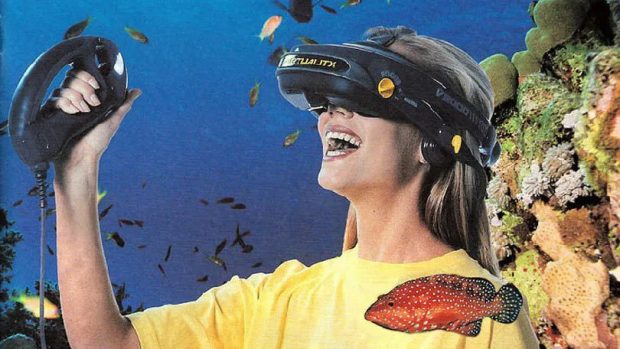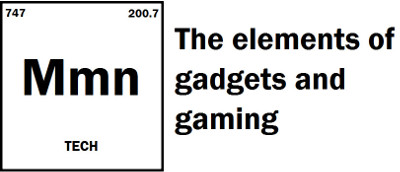

The obsession over graphics is holding games back
If you asked me in early 2017 if good graphics were important to video games, I would have said “heck yeah”. I am, after all, a PC gamer at heart, and if there’s one thing PC gamers love, it’s pushing the cutting edge. However, in recent years, advanced graphics have become the sole focus of a lot of game studios. It’s one of the key reasons why budgets have become so bloated, and why there seems to be so little innovation nowadays.
I started thinking about this topic the other day after picking up Xenoblade 2 again. While it’s my least favourite game in the trilogy, it’s certainly the best looking. It’s a real showcase of what the Switch is capable of. Characters are vibrant and expressive, and environments are chock full of detail. It honestly surpasses a lot of games running on more powerful systems. Which is pretty impressive considering it released in the system’s launch year. It’s just gorgeous by about every metric.
You often hear how art style trumps graphics, but I think Xenoblade 2 hits a perfect balance of both. But would it meet the expectations today’s gamer? Well, that really depends on whom you talk to. Xbox and PlayStation fanboys consistently rate graphics as being their top concern when buying a new game. Even above things like story and mechanics. Which to me is a bit weird, down ranking the interactivity part of an interactive medium. However, it explains why so many AAA games studios are so laser focused on making games that look, and play, like blockbuster movies.
The thing is that we’ve kind of hit a point of diminishing returns for 3D game graphics. I came across a X post a while ago that said that visuals had peaked in the PS2 era, and it’s all been minor incremental improvements from there. It’s one of those things that gives you that initial “someone’s wrong on the internet” reaction, but starts making sense the more you think about it. When the PS3 came out, a lot of people claimed it wasn’t a big enough jump over its predecessor. Especially not enough to warrant its steep price tag. People then said the same thing when the PS4 came out. I think a lot of this comes from cherry picked results. If you’re comparing the most graphically advanced games from the previous generation to middling ones from the current gen, of course the difference isn’t going to be as big. But even there, the gulf is closing.
One thing you’ll notice about this current console generation is that games on the Xbox Series X and PS5 actually don’t look significantly better than they do on the PS4 and Xbox One. Often times, they look identical. Part of that is due to extended cross-gen support due to hardware shortages. However, even in recent titles, the actual improvements in visual fidelity have been getting less and less noticeable, while hardware requirements to pull these off have become exponentially greater. The PS5 is 5.8x more powerful than its predecessor. But do it’s games look 5.8x better? I mean, maybe?
The metrics for determining that have gotten murkier over the years. Much of the buzz right now is around ray tracing, which is supposed to provide more realistic lighting effects. It’s also computationally expensive. Turning it on usually results in a significant hit to game performance. While it’s been on the market for five years now, most games I’ve tried it in don’t look significantly better than ones using older, less intensive lighting techniques. The RDNA2 GPUs used in current gen consoles are also pretty bad at it. So the marketing focus right now has shifted to pushing higher resolutions and frame rates. Which don’t get me wrong, can certainly improve the overall experience. Especially the latter. However, these aren’t necessarily as noticeable as you might think, nor as necessary. Really anything above 60fps is just sprinkles on the doughnut for the vast majority of games and gamers. Even then, current consoles are struggling to hit that mark. Of course some of that is due to the fact that most AAA developers today can’t optimize their way out of a wet paper bag. Which has led them to using tools FSR and DLSS as a crutch to hit target frame rates at the expense of resolution.
Now there’s rumors that Sony is already talking a PS5 Pro to address the shortcomings we’re seeing. Which will undoubtedly cost more than the already pricey base model. Yet as someone who “upgraded” from a PS4 to a PS4 Pro, even back then the improvements were dubious at best in the games that actually took advantage of it. Most games didn’t. Simply because, unlike a PC, console games have to be updated by the developers to utilize the more powerful hardware, and due to the lower install base, few bother.
Over the last couple of years, I’ve actually been spending a lot more time with hybrid handhelds than more traditional gaming systems. This past weekend, I fired up Final Fantasy VII Remake on the Steam Deck. Sure it was only rendering at 720p and 30fps, with high graphical settings. It’s a last gen game, so it should be right at home on the system. Yet I was impressed by how good it actually looks, even on my TV. This is from a system with a 15-watt chip, that I can unplug and take anywhere. I had also picked up Crisis Core for the Switch. Mostly because I still like buying physical copies whenever I can. It runs on the same engine as the FF7 remake, and despite running on a system with less than half the power of the Deck, it still looks and performs great. As do games like Xenoblade. Of course it also helps that these all have tight gameplay with compelling stories. Which is where most modern AAA games have lost the plot.
You can ignore bad graphics if the game is fun. Nintendo has known this for years. Heck, Pokemon wasn’t a visually impressive title even on the Game Boy. Yet it became an international phenomenon because its gameplay resonated with people. Even more recently, look at how well games like Vampire Survivors, Sea of Stars, and Dave the Diver have done. Or how well Minecraft, Stardew Valley, CS:GO, and Among Us are still doing. Meanwhile, a lot of graphically advanced games have received mixed reviews and have failed to meet investor expectations. Call of Duty Modern Warfare III 2: Electric Boogaloo certainly looks very pretty. But even the mainstream press, who usually fawns over everything the AAA industry puts out, were calling it boring. Same goes for Starfield.
Visual spectacles are simple to market, as it’s easy to wow people with impressive trailers of “in-game footage”. However, they’re also very expensive and time consuming to make. Which is one of the key reasons why the AAA industry is putting out fewer and fewer games every year, and why games are overall getting more expensive to buy. Yet with that being the focus, things like story and gameplay have dropped by the wayside. As has creativity, Nobody wants to take risk on new IPs when the costs are that high. So instead they just focus on sequels and remakes, where the mechanics are already set in stone, and today’s developer can just divert all their resources to the only thing they know how to do.
The reality is we peaked with graphics during the 8th console generation. What we actually need is a return to tighter mechanics, fun gameplay, unique art styles, and better story telling. Something that AAA studios are failing to offer. Which means anyone who can will likely have a hit on their hands, as people are hungry for something fresh and new.

